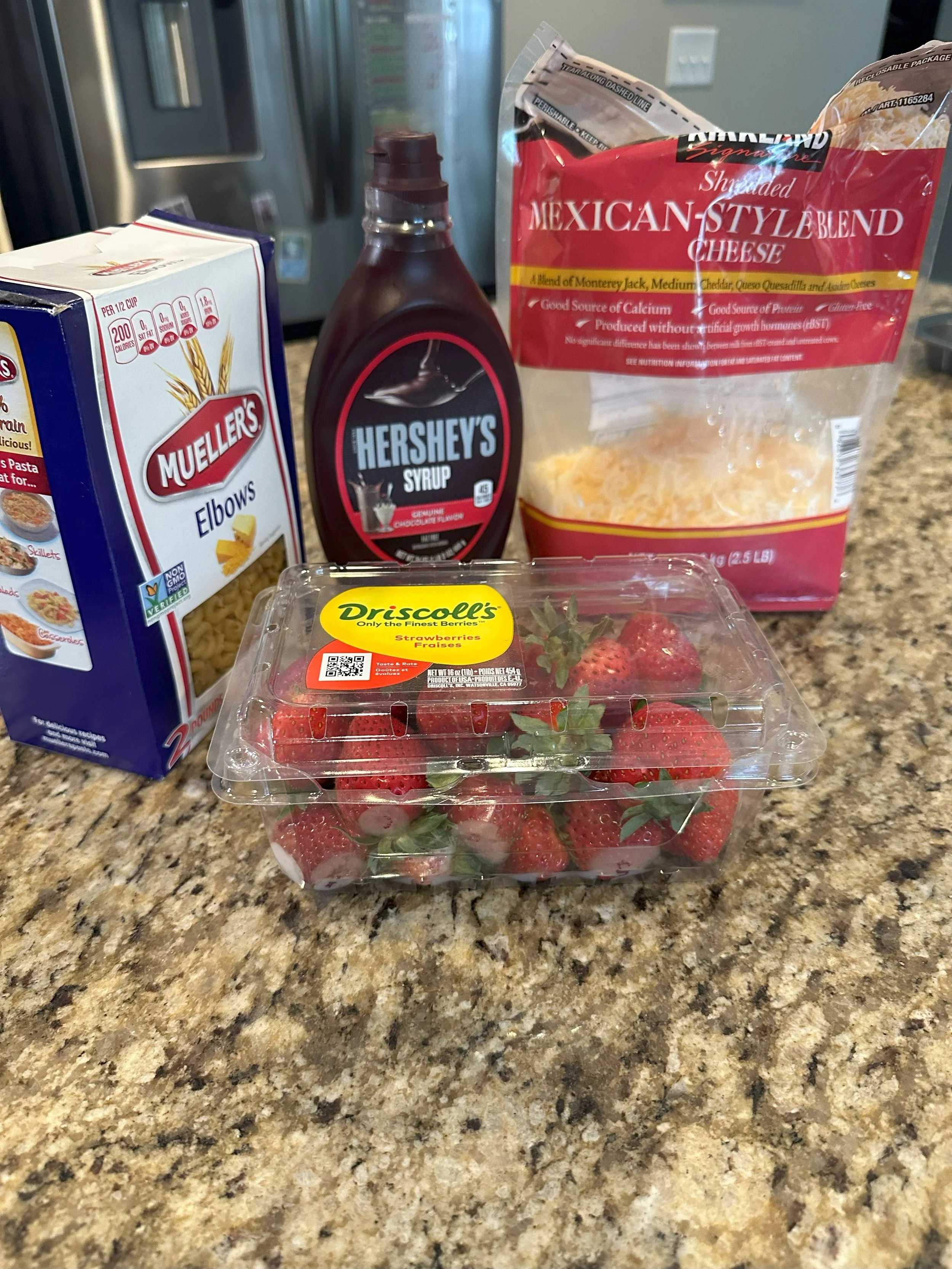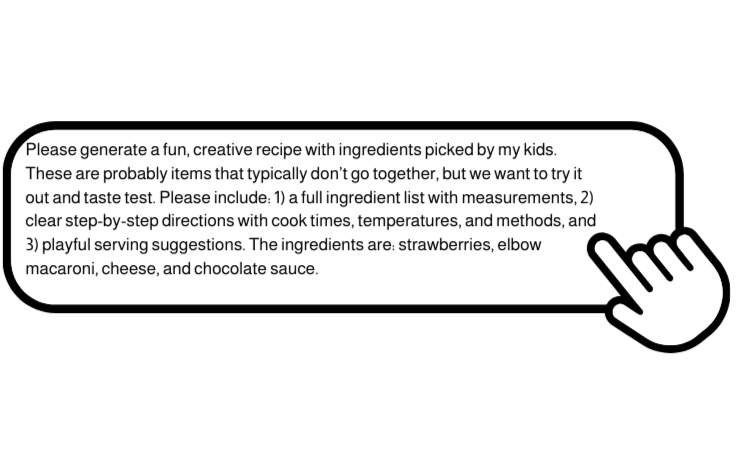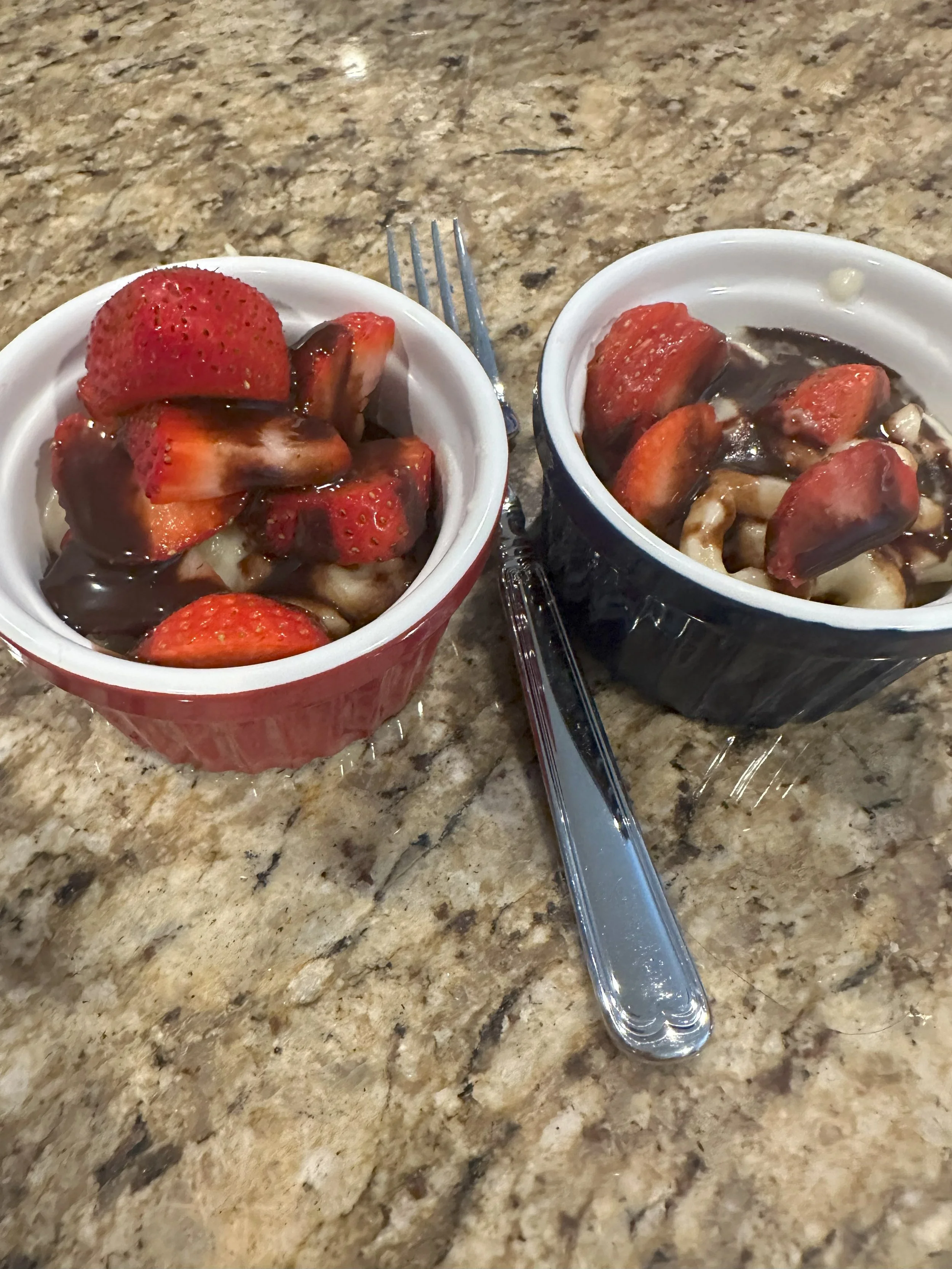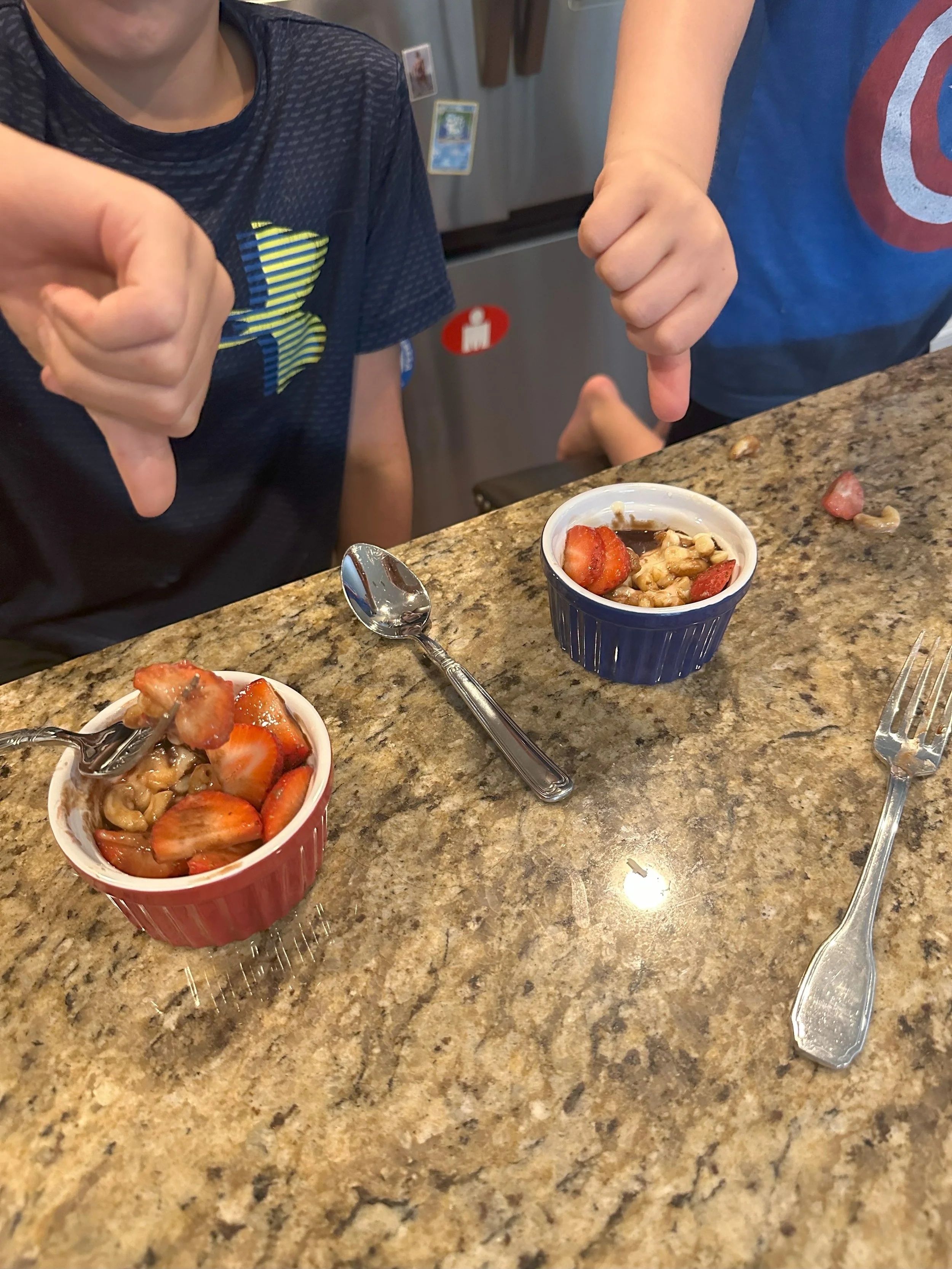Picks to plates
Turn curious combinations into food explorations
Watching some of the food combinations your kids come up is sometimes pretty cringe-y. Maybe they’ve tried some of their own mixing experiments like peanut butter on pizza, My one son dips strawberries in ketchup. What if, instead of just saying “that’s gross” you could turn it into a food learning experience?
Turn food curiosity into kitchen science
When your child picks weird ingredient combinations, there's usually a reason behind their choices. This activity lets you dig into their thinking while teaching them how to use AI to understand how these foods work together—or don’t!
They choose ingredients and make predictions, you help them use AI to create a real recipe, then you cook and taste-test together. The key learning: AI will create a recipe from any ingredients and tell them it's delicious, so they need to evaluate whether it actually makes sense. They learn that even "failed" experiments teach valuable things about food, flavors, and how to think critically about technology.
Let’s get cooking!
I’ve included a quick overview of the activity, but there’s so much more to it.
Inside the FREE Picks to Plates Complete Guide you’ll get:
Step-by-step process with real kitchen examples
10 ready-to-use AI prompt templates, including specialized prompts for healthy snack challenges, learning about food groups, cultural fusion recipes, and seasonal cooking experiments
Troubleshooting guide for AI confusion and kitchen disasters
Age modifications from 3-year-old sensory exploration to teen
culinary chemistryExtension activities like creating family cookbooks and researching ingredient origins
Parent reflection questions about your child's food relationships and creative thinking
Kitchen supply lists plus pantry staples for backup "success" recipes
Pro tips for comparing AI tools and creative serving suggestions
Ready to turn you kitchen into a discovery lab?
Grab the full guide now for FREE.
The quick how-to
Tools we’ve tested this with: ChatGPT, Google Gemini, Claude AI
Items you’ll need : Basic kitchen supplies, kids’ choice ingredients, back-up ingredients, access to technology, and a ready-to-experiment attitude.
① Pick your ingredients
Kids choose 3-8 ingredients from your kitchen. Let them pick weird combinations—that's where the real learning happens.
My kids chose:
Strawberries
Chocolate sauce
Cheese
Elbow macaroni
② Ask AI to create a recipe.
Use specific prompts to get actual measurements and cooking instructions.
③ Evaluate the recipe together
Read it with your kids: "Does this make sense? Will this actually taste good?" You may want to ask if there are some everyday ingredients needed to make it work. We did that and added: Flour, butter, and milk.
④ Cook and taste test
Everyone tries at least one bite. Document the chaos and reactions. My kids did not love our creation! I wasn’t completely surprised, but honestly, I didn’t think it was that bad.
⑤ Reflect and learn
Discuss the activity and lessons learned.
Why this activity works
Through this activity, kids develop skills they'll need for life: scientific thinking, critical evaluation of technology, kitchen basics, and the confidence to experiment and learn from results.
They discover that AI will always try to create a recipe, even from impossible combinations. They learn to question, evaluate, and make their own decisions about what makes sense.
Most importantly, they understand that "failure" is just data for the next experiment.
It’s applicability spans age groups
Young kids (3-5): Simple ingredient exploration and sensory learning
School age (6-12): Full cooking experience with kitchen safety
Teens (13+): Complex food science and culinary experimentation
Time needed: 45-90 minutes including cleanup
Mess level: High but educational
Learning value: Comprehensive.
Ready to get started?
This is just a quick taste of the full activity. Download the full guide for just $5. With it you get more prompts, a full step-by-step guide, many extension activities and so much more!






